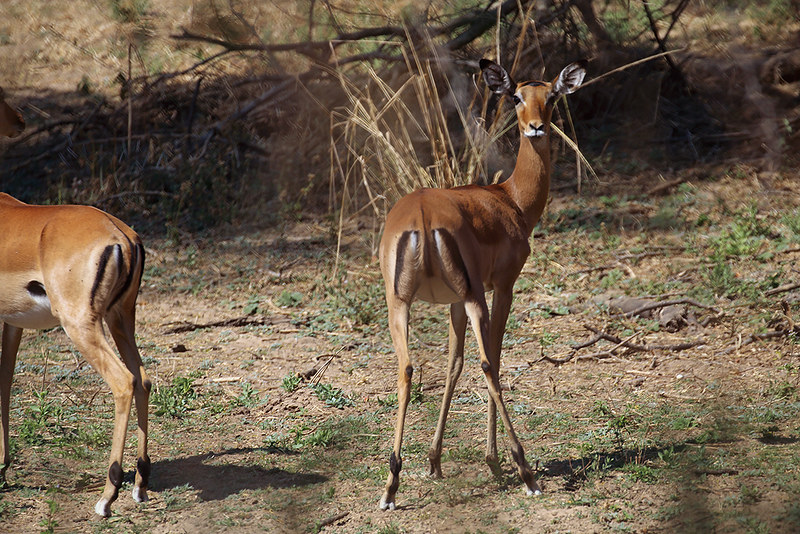Ruaha National Park: Tanzania Wildlife Safaris
Ruaha National Park is the second largest protected area, situated 130 km south of Serengeti National Park and west of Iringa and Selous Game Reserve in southern Tanzania. The protected area was initially designated as the Saba Game Reserve in 1910. Subsequently, in 1946, the designation was altered to Rungwa Game Reserve. The southern section of the reserve was subsequently designated as Ruaha National Park. The park encompasses an area of 20,226 square kilometers (7,809 square miles), when it previously spanned 13,000 square kilometers.
Ruaha National Park
In 2008, the Usangu Game Reserve was incorporated into the park, resulting in an expansion of its area. The park is an integral component of the Rungwa-Kizigo-Muhesi ecosystem, encompassing the Rungwa Game Reserve, Kizigo and Muhesi Game Reserves, and the Mbomipa Wildlife Management Area. In 2005, Ruaha National Park was designated as a lion conservation unit, with the Usangu Basin identified as one of the Important Bird Area (IBA) recognized by Birdlife International. The protected region is named after the Ruaha River, which flows through the southeastern section of Ruaha National Park. The river draws various fauna, particularly migrating birds.

Vegetation in Ruaha National Park
The park features several types of vegetation, including riverine forests, Miombo woodlands, open savannahs with acacia trees, kopjes, dry bushlands, rolling hills, flat plains, and swamps. Ruaha National Park contains several rivers, including the Jongomero River, Great Ruaha River, Mwagusi, and Mzombe, which are vital to the park’s ecosystem. The waterfalls along the Ruaha River provide a home for crocodiles, hippopotamuses, and various aquatic fauna.
In the dry season, the Ruaha River is reduced to a series of scarce waterholes that predators exploit by lying in wait for the antelope herds that approach to drink. The riparian flora along the riverbanks offers ample concealment for predators, rendering it the premier hunting territory in the park. Nonetheless, the complete forest offers optimal habitats and observation areas for various types of flora and fauna.
Wildlife in Ruaha National Park
Ruaha National Park is renowned for its substantial population of elephants in East Africa, numbering approximately 10,000 individuals. Nevertheless, the park hosts several mammals, including those that are infrequently, rarely, and commonly observed. The list include Lion, Cheetah, Wild Dog, Leopard, Hyena, Jackals, Bat-eared Foxes, Elephants, Buffalo, White Rhino, Black Rhino, Giraffe, Wildebeest, Hippopotamus, Zebra, Lesser Kudu, Greater Kudu, Elands, and Antelope. The protected area harbors uncommon antelope species, including sable and roan antelopes. Ruaha National Park is the sole park in East Africa that hosts both lesser and greater kudu. The park accommodates around 570 avian species, including endemics and migratory birds. Notable avian species include the Emerald-spotted wood dove, Tanzanian red-billed hornbill, Southern ground hornbill, Black-bellied bustard, crested barbet, ashy starling, Yellow-collared lovebird, Spur-winged goose, collared palm-thrush, Bateleur, and Giant kingfisher, among others. These are observable in savannah woodlands interspersed with acacias and baobabs.
Things to do in Ruaha National Park
Game Drive this is a highly favored activity in Ruaha National Park, often carried out in open 4×4 vehicles to facilitate the observation of the park’s various species in their natural environment. The park provides game drives in the morning, afternoon, and evening. Morning game drives provide the chance to observe predators such as lions, cheetahs, wild dogs, serval cats, and other nocturnal species. Afternoon excursions are optimal for observing herbivores as they forage. These may include impalas, antelopes, kudus, zebras, and elephants, among others. The nocturnal game drives occur in several vegetation types inside the park. This period presents opportunities to observe nocturnal wildlife, particularly secretive species such as bush-babies.
Birdwatching Ruaha’s ecosystems, encompassing savannahs and wetlands, provide optimal habitats for a diverse array of avian species. Ruaha National Park is home to more than 570 bird species, including migratory birds from both inside and beyond Africa. The park is home to various bird species, including the endemic Ruaha red-billed hornbill, black-collared lovebirds, bateleurs, sunbirds, ashy starlings, fish eagles, kingfishers, ground hornbills, and others. The optimal period for birdwatching in this park is from November to April. This season, the park attracts migrating birds from Europe and various regions of Africa, and there are elevated nesting rates among some avian species.
Supervised nature excursions
This is the optimal method for experiencing the essence of Ruaha National Park. Participate in a walking safari accompanied by an armed ranger and local guides over established pathways through the bush, shrubs, swamps, and forests, observing various species of animals and vegetation. Nature walks are limited to a maximum of six participants. The activity provides an opportunity to explore the region’s fauna and see the local village. Interact with Maasai tribes to gain insights into their music, customs, and sustainable practices.
Fluvial voyage
The action occurs along the expansive Rauha River. River cruises provide the chance to observe hippos sunbathing and crocodiles. Numerous wildlife species are observed near the riverbanks to satisfy their thirst during the dry season.
How to get to Ruaha National Park
Access to Ruaha National Park can be achieved either road or air, contingent upon the traveler’s preference.
The majority of car excursions to Ruaha National Park commence at Julius Nyerere Airport in Dar-es-Salaam. The travel requires approximately 10 to 12 hours. Visitors to Ruaha can conveniently combine their trip with Mikumi National Park, as the journey between the two parks requires five hours. Air travel can be facilitated through chartered or scheduled flights, such as Auric Link or Coastal Aviation. These flights depart from Dar es Salaam, Arusha, Kigoma, and Dodoma to Msembe airstrip and Jongomero airstrip in Ruaha National Park, Iringa region.
Accommodations in Ruaha National Park
The park offers many housing options, including cheap, mid-range, and premium facilities. Included among these amenities are Kigelia Camp, Jongomero Camp, Ruaha River Lodge, Mwagusi Safari Camp, Tandala Tented Camp, Sunset Mountain Lodge, Ruaha Hilltop Lodge, and Jabali Ridge, among others.
